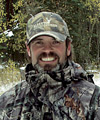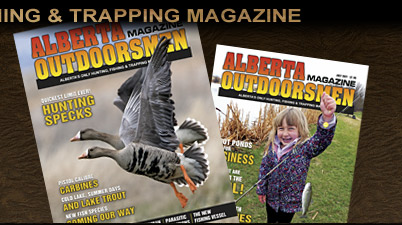|
 |
 |
I believe it was the Minister of Agriculture, Food and Rural Development, Ernie Isley, under the Ralph Klein government, who introduced Bill 31, the Livestock Industry Diversification Act back in 1990. The Act was meant to help farms diversify. But there was much uproar and those much smarter than I proclaimed there would be dire consequences should farms be allowed to raise exotic, non-native animals, and native wild deer and elk.
And, as so often happens, governments don’t listen to those smarter than they are and in the end, we got exactly what was warned would happen.
Today, we are dealing with chronic wasting disease in wild deer, elk and moose in Alberta, as warned. We are also now faced with what could be considered the most invasive species of them all, wild boar, which were introduced to Alberta in the early 1990’s.
According to Ryan Brooke of the Canadian Wild Pig Research Project at the University of Saskatchewan, “They are the single most successful invasive large mammal on the planet.”
To try to prevent farm escapes, in 2014 the Government of Alberta introduced the “Minimum containment standards for Alberta wild boar farms”. According to the government, “These enhanced fencing requirements were put in place to help prevent boar from escaping and becoming pests at-large.”
One requirement meant that farms of wild boar had to have a buried fence, no less than 45 centimetres deep that contained an electric wire.
But it was too little, too late.
To date, wild boar have been spotted in 28 counties in Alberta and it is expected that number will continue to grow, as it has in other US jurisdictions. As an example, Texas has an estimated population of 2.5 to 2.6-million wild pigs in 253 of its 254 counties, causing an estimated $50 million in agriculture damage each year in that state. In fact, the US federal estimate of the total annual damage done by wild pigs in the US is $1.5 billion yearly. It is suggested that in order to keep the Texas wild boar population in check, in other words not growing beyond the estimated 2.6 million population, 1.7 million wild boar need to be killed each year. Current efforts estimate that less than half of that is being accomplished.
Wild boar are also a danger to both humans and animals and are potential carriers of diseases, such as Hepatitis E virus, brucellosis and tuberculosis that can be transmitted to people.
Wild boar also weigh an average of 150 pounds but can weigh much more than that, up to 400 pounds and more.
They are also prolific breeders, able to breed at less than 12 months old and can have two litters of four to six piglets each year, if conditions are right.
So, it’s not hard to see that at-large wild boar can become a big problem quickly.
Recognizing the problem can’t be ignored any longer, the Alberta government has launched its Wild Boar Control Program that allows for expanded surveillance and trapping, a modified bounty (remuneration) program, and crop insurance to affected farmers. Most interesting to hunters though is the bounty of $75 being paid for a pair of wild boar ears. You can read more about this program on page 8.
But does hunting wild boar help or hinder control efforts? In a previous wild boar fact sheet put out by the Alberta government, it clearly states, “Non-professional (recreational) hunting of wild boar at-large can actually make it harder for organized control efforts. Boar are very smart. Hunting can make them learn quickly to avoid humans, disperse to new locations and become nocturnal. As well, the high reproduction rate of wild boar means that hunting is not an effective means of control.”
However, something changed and the government is now all hands on deck.
In Texas, all systems are go to reduce their wild boar population, including all manners of hunting.
Last Shadow (which implies the last shadow a wild boar will see before death), is a helicopter company that sells hog hunts from a helicopter.
“Heli hog hunting is part of the great state of Texas’ hog depredation program,” says the company’s website.
“You’ll fly at speeds of up to 175 mph, covering hundreds of thousands of acres of Texas farmland. You’ll have a chance to take out as many wild hogs as you possibly can.
“Make no mistake—hunting moving targets while strapped into a flying vehicle is the ultimate test of a shooter’s skill...”
In Alberta, the hunting program will run until March 31, 2023 and then be reevaluated for possible extension. ■
For previous Outdoor Pursuits click here.
|
|
|
|


